Of all England’s mammals, there is one – more than any other – that I have always wanted to see in the wild.
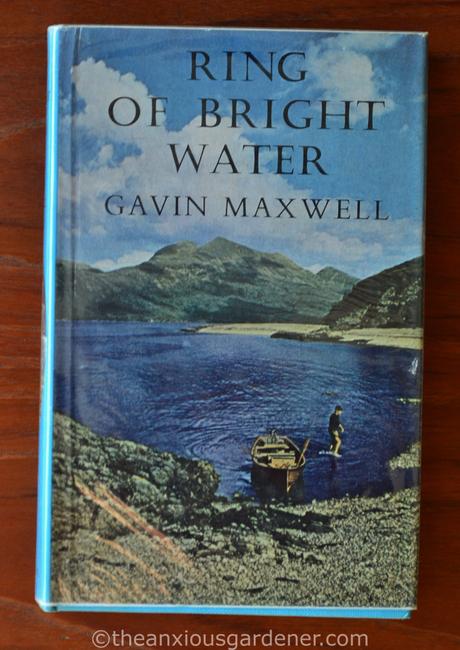
That book
Only one animal which, since I saw that film and read that book as a boy, I’m aware of, subconsciously at least, as I walk alongside streams and rivers and shoreline.
When I was younger, many of England’s waterways were too polluted for fish and otters; and if otters could find clean water, they might be hunted with otterhounds. (Otter hunting was only outlawed in 1978). No surprise then that I thought my chances of spotting one in southern England were slim. But I looked nevertheless and especially when I traveled to more remote country in Lakeland, Wales or Scotland. I never expected to see one properly you understand; just a curve of wet fur rolling underwater or a streak of dark litheness flowing up a bank into undergrowth, leaving no trace but a ring of bright water.
And I most certainly never expected, not even in my weirdest dreams, to see one in front of my own house for goodness sake. Not a bloody otter.
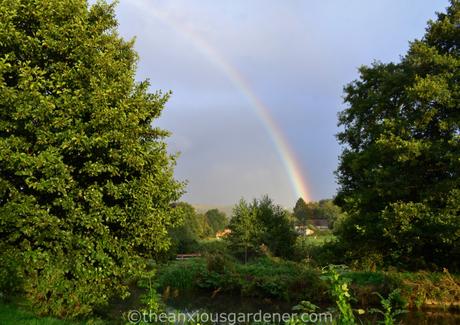
The view from the house. The canal is in the foreground, the bench overlooks the hidden river beyond. The Frisian cow at the end of the rainbow is incidental. September 2018.
In August, we moved into a canal-front house in Stroud. And we knew on arrival that there are kingfishers here, nesting mute swans and I heard, to my stuttering disbelief, that otters live here too. As we’ve walked or cycled along the tow-path, I’ve been extra vigilant – obviously – hoping that I might finally see my wild otter. I’d seen kingfisher many times before I moved to Gloucestershire … yet to have seen them twice already from my house windows is still pretty amazing. But despite my fervent wish, I’ve seen no otter.
Until.
The other day, Jim and I were loading the car before driving off to Pembrokeshire. As we carried out far-too-much-stuff-for-a-three-night-break, we noticed a group of people on the far bank of the canal looking down into the river beyond.
Jim shouted, “What is it?” (half expecting them to shout back, “A body.”).
“An otter,” someone replied and after Jim and I had exchanged a wide-eyed grin, we left our luggage on the driveway, our house and car doors wide open and, grabbing my camera, jumped on our bikes, cycled seventy yards to the end of our road, crossed the footbridge and pedalled furiously back to the bench overlooking the river.
I stepped up onto the wall of the weir between canal and river and looked down into a mass of quaking watercress. Quaking because something was heaving it from beneath.
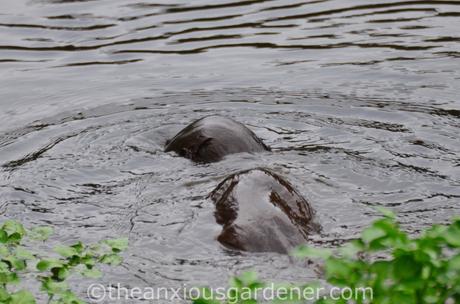
I was twitching with excitement but still unbelieving … until up popped a dark blunt head. There he was: a wild, beautiful otter. Upon my word. He quickly disappeared but then re-emerged momentarily beyond the cress before curling back underwater. Was that it? Had he gone?

Nope – he snapped up again, twisting manically and proving to be, in low light, a devilish camera subject.

I continued clicking hoping for at least one decent shot before he was gone.
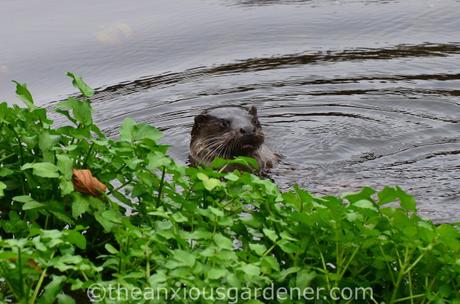
But, he was in no hurry and appeared remarkably unconcerned by his adoring audience standing just a few feet away.
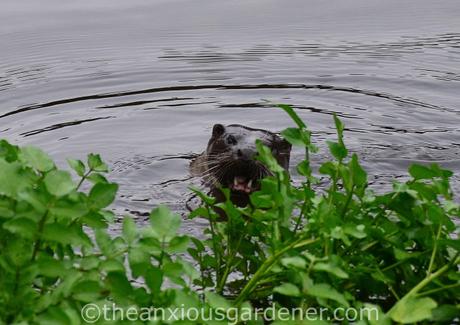
He’d found a wealth of food and took his time enjoying it; whatever it might have been: snails perhaps or freshwater mussels.
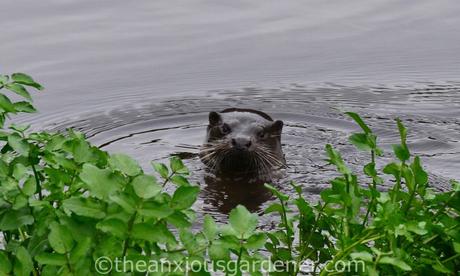
This was an encounter which slipped from hope to a breathless glimpse, to a prolonged close encounter, to … “Er, we really need to be off to Wales now, otter. Sorry.” Eventually, reluctantly, we let him be and cycled back to the car.
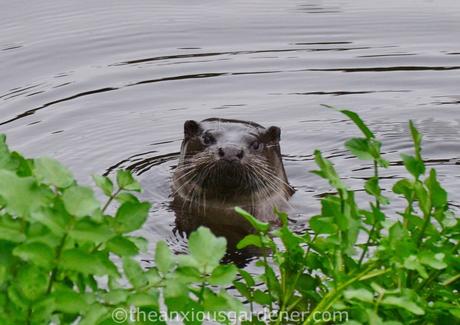
There is so much relentlessly gloomy news about wildlife and the environment that this simple encounter was a significant and bright moment for me.
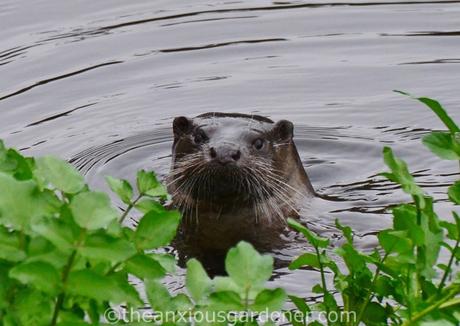
For the rest of the day, at intervals, Jim or I would say, “We saw an otter. Outside our house.” Saying it made it more real.
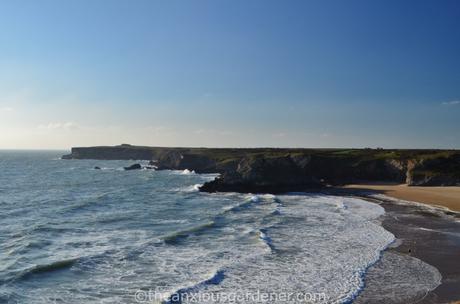
Broadhaven Beach, Pembrokeshire
Over the following weekend, as we walked the stunning Pembrokeshire coast, the sheer amount of plastic waste washed up on the white sand was keenly depressing; providing more unremitting evidence of what harm we are doing to our planet. As if we need more.
But, but the Stroud canal, the Stroudwater Navigation, is one resounding success story, amongst the havoc. The Cotswold Canals Trust has restored most of it in the past few years and plans to continue its resurrection all the way under the M5 and out to Saul Junction, linking up with the national canal network.
When Jim was growing up in Stroud in the ’70s and ’80s, the canal was mostly derelict: party filled in, built over, dumped full of rubbish and fenced-off completely in places. And now? Well, locks and bridges have been rebuilt or repaired, the towpath reinstated and maintenance barges chug past our house – dredging, cutting back vegetation, keeping the waterway clear. What was once a fenced eyesore for our neighbor when she moved here twenty-five years ago, is now a wide band of still water with the occasional kayaker; and its busy towpath is used by joggers, cyclists, dog-walkers, schoolchildren and walking commuters. Thanks to all the astonishing work by the Trust and a host of volunteers, it is now home to a rich variety of wildlife including mallard, moorhen, swans, kingfishers and, would you believe it, bloody otters.
It’s nice to have some good news once in a while.

